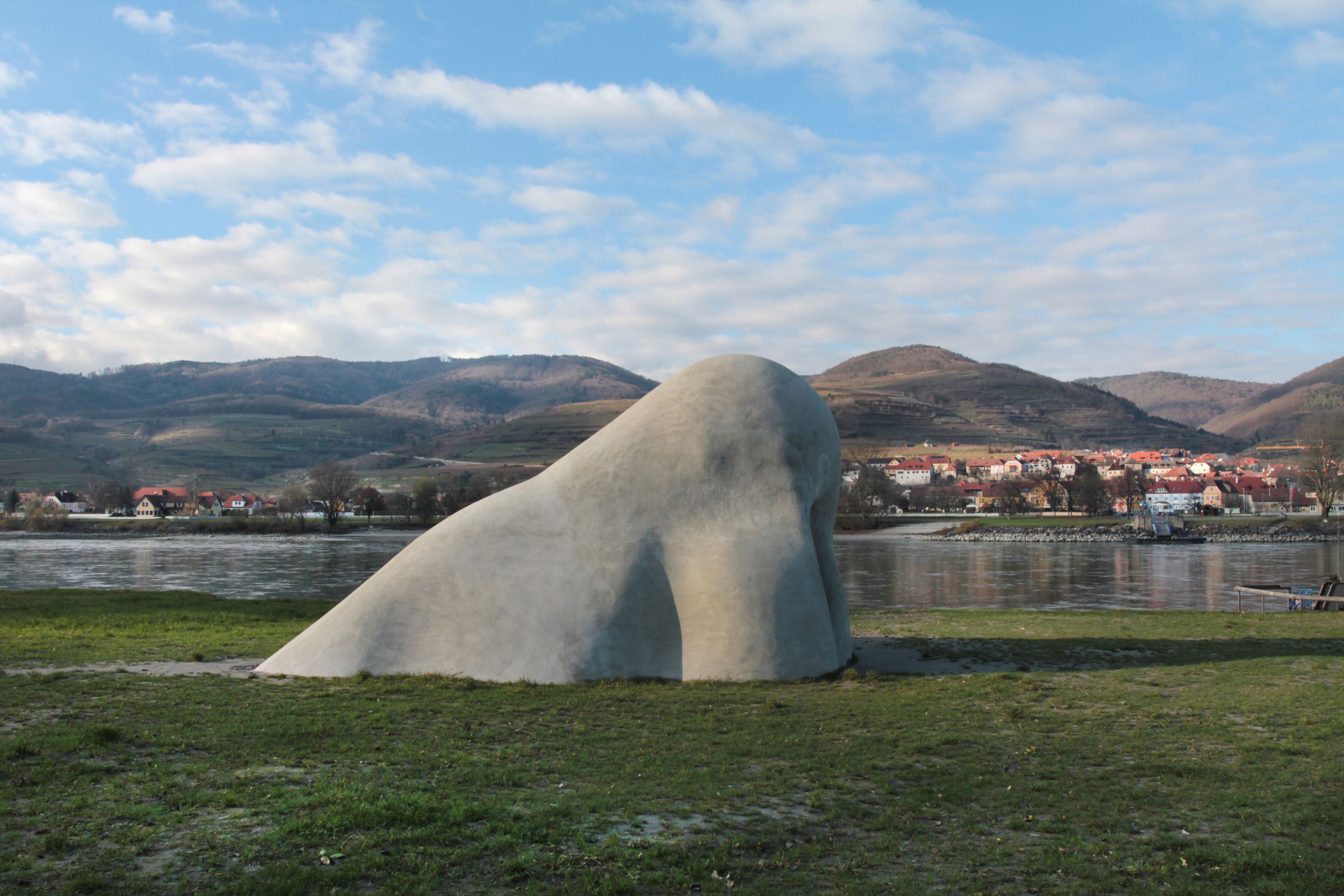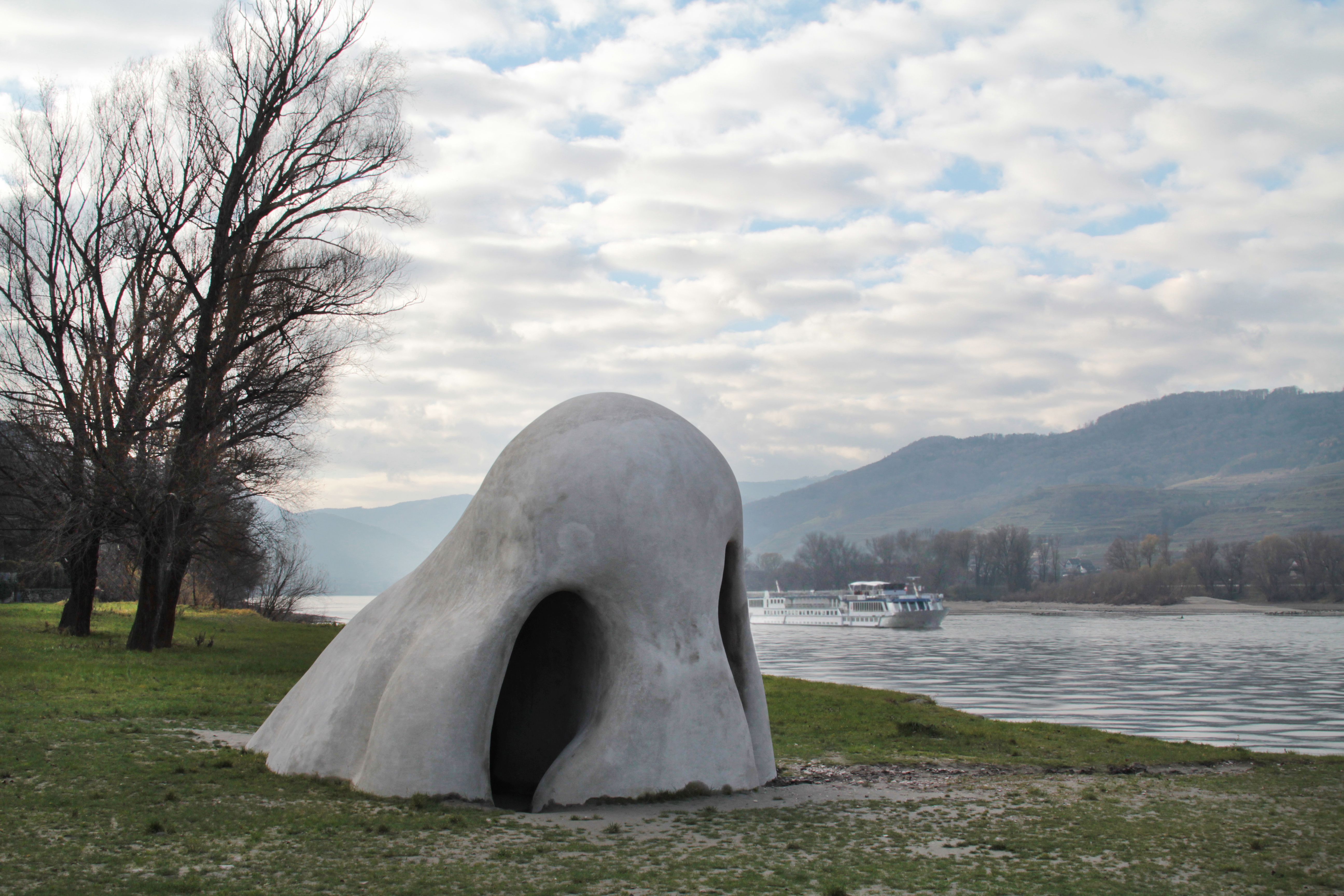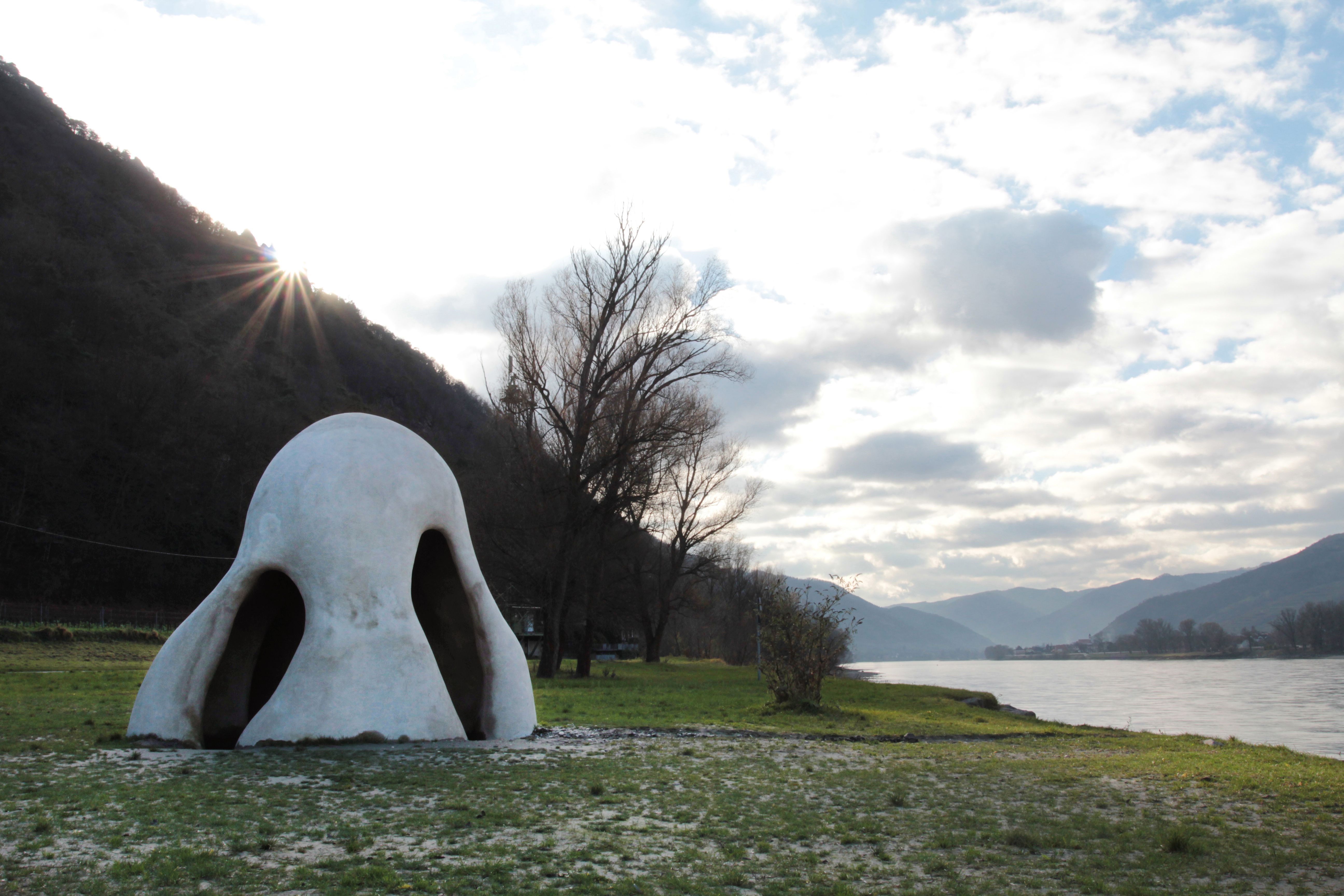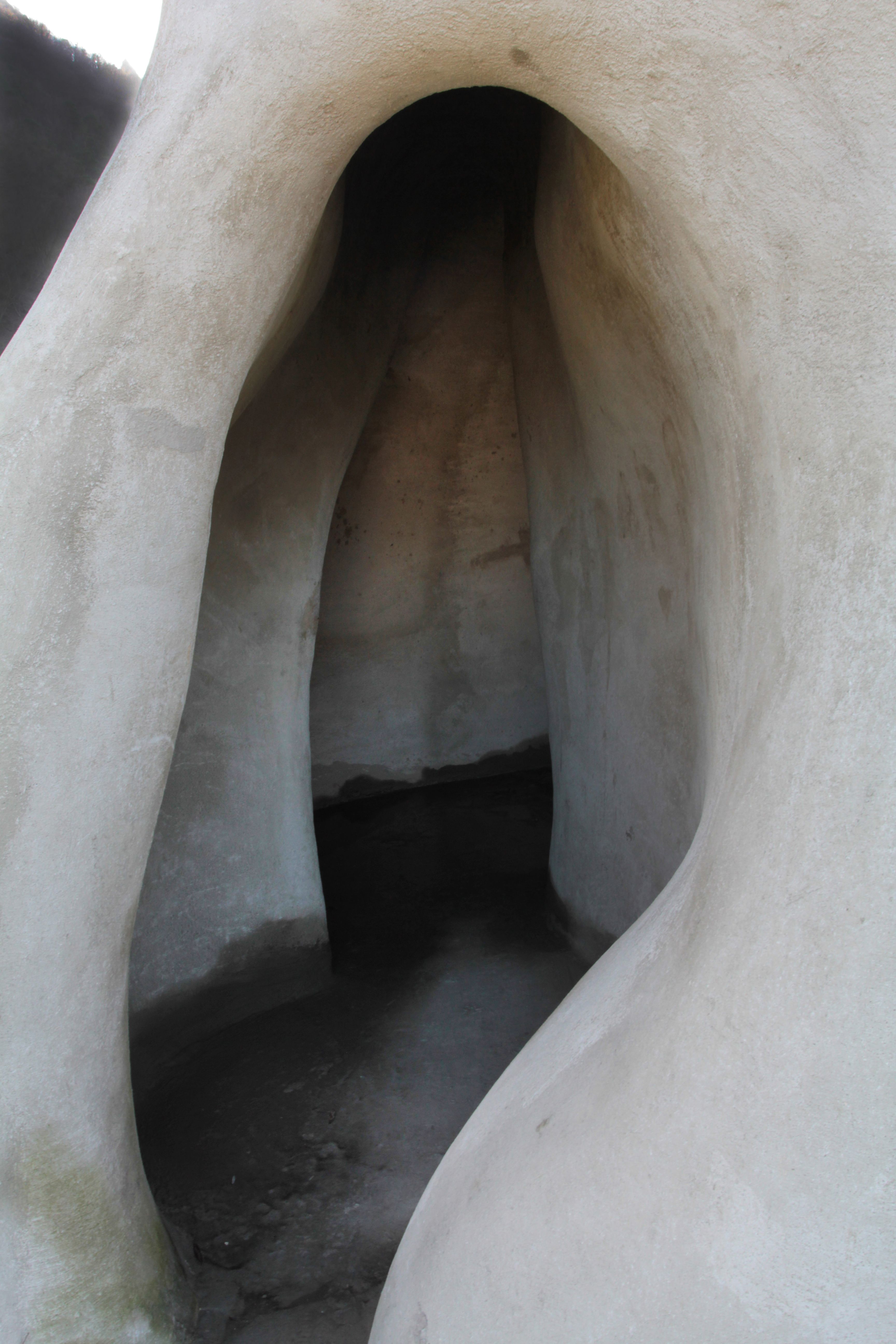Gelitin
:
Nase
Back
Information
I.
It is almost idyllic: A nose rises up from the banks of the Danube, right next to the St. Lorenz ferry station in the Wachau region. The nose is about four meters high and meticulously made out of concrete. The nostrils form small caves that you can enter. And if you climb on to the tip of the nose sticking out in the air, you can enjoy a wonderful view of the river flowing past. Children especially like to do this, naturally.
It seems a little as if Jonathan Swift’s Gulliver has been buried here, near the Danube, with just his nose protruding out of the soil. However, the nose is actually a piece of public art designed, built and erected by the artists’ group Gelatin from Vienna. The work is called Die Wachauer Nase (The Nose from Wachau) (2014).
This nose not only reminds us of Gulliver’s Travels, but also of Claes Oldenburg’s watercolor Design for a Tunnel Entrance in the Form of Nose (1968), or the collage 5 Sinne (Five Senses) (1967) by the postmodern architect Hans Hollein, which shows a building in the form a gigantic nose in the middle of New York City.
II.
Preparations for the Wachauer Nase began already in October 2012, when Gelatin, with the help of the local newspaper, asked the citizens of Wachau to let them document their noses. Plaster casts of roughly 70 noses were made. These served as models for a typical nose in the Wachau region. As a result of this process, the Wachauer Nase – true to its name – also became a portrait of the people in the community near the sculpture, a portrait that, with a wink of the eye, also documents the impossibility of making such a “group portrait.”
The US artist Nancy Burson used a similar procedure for her photographic portraits – for example, in Big Brother (1983), in which she constructed a sort of ideal portrait of a typical dictator by using a computer to create composite TV pictures of well-known dictators.
III.
In the art world, it is difficult to talk about evil because it is a realm has long been streamlined to allow only a positive mood, just like in our postmodern media landscape. This did not change even when the right wing populist party FPÖ tried to stage a scandal in which they used their usual vocabulary, calling the Wachauer Nase “cultural nonsense” and an “abnormal taste in art.” The French philosopher Jean Baudrillard explained why the “possibility for evoking evil does not exist” in his book Transparency of Evil (English 1993, French 1990): “every last trace of negativity is smothered by the virtual consensus that prevails.” Today this consensus includes more or less accepted “feuds” like the one between the FPÖ and the artists’ group Gelatin.
Gelatin, however, only appears to take a positive stance with their nose. In its own roundabout way – using “indirect speaking” (Michael M. Bakhtin), if you will – the Wachauer Nase also speaks about negative things, not least because the nose is a motif with a latent history of evil. For centuries it has been a sign of alcoholism and of foul characters. A classic example of this is Honoré de Balzac’s description of the print shop owner Nicolas Séchard in his Human Comedy (1830–1847): “his nose had assumed the shape and contours of a capital A of triple canon size.” This is also a ready association in the wine growing area of the Wachau region. Then there are “noses” on paintings – in other words, thin bulges that form when paint accidentally runs down, damaging the painting. Or just think of people who “stick their nose in everything,” or who are “snot-nosed brats.” These are images that play a role in the reception of the Wachauer Nase, and they question the “virtual consensus” that Jean Baudrillard claimed existed, at least a little.
V.
The Wachauer Nase also takes on a more critical tone when considering the environmentally precarious situation of a flood, for example, which happens three times a year here in St. Lorenz. Then the nostril caves become flooded by water and they begin to stink. This flooding happens right under nature’s nose, so to speak, because these floods are partially caused by the increasingly disastrous effects of climate change.
VI.
Gelatin, who are not Greenpeace activists, also see a lighter side to the issue of dirty noses. During the opening ceremony of the Wachauer Nase on 12 July 2014, they cleaned it nicely (shrewdly “removing dirt” from it). During a performance, the members of the artists’ group pulled out yellow plastic bags from the nostrils of the sculpture. These bags were filled with snot and boogers that they had collected for months. The Wachauer Nase thus turned out to be a Trojan Horse, bringing forth seemingly disgusting things for a moment, despite appearing nice and neat.
VII.
On second glance, the Wachauer Nase therefore also seems to express its criticism through formal language. Although the work appears to be a rather harmless figurative sculpture at first – as mentioned above, it even serves as a playful kind of viewing platform – the (“trained”) beholder soon also feels something close to discomfort when dealing with the culture of the Wachauer Nase. The reason is obvious. Due to their recent history, figurative sculptures are always “artistically incorrect” because they have been, and still are, abused by totalitarian powers as monumental forms of representation – most often as decidedly polemic rejections of the artistic language of abstraction. Whether intentional or not, the Wachauer Nase has found a home in this tradition of evil, flaunting its huge size and playing with fire in a calculated fashion.
(Raimar Stange)
Images (4)




